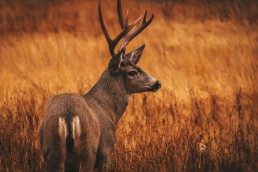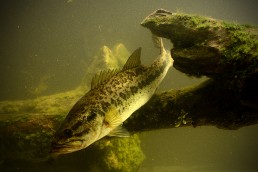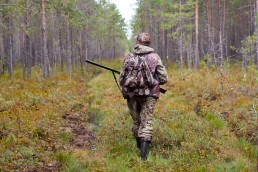Spaulding Outdoors
SHARE THIS POST
‘Check-out’ state parks with library pass
In 2016, Hoosiers can visit state parks by checking out an entrance pass from a public library. The State Park Centennial Annual Pass Library Check-out Program is a partnership between Indiana State Parks and the Indiana State Library to encourage people to visit libraries and parks.
At libraries across Indiana, 240 state park passes have been placed in circulation for checkout. The passes will provide access to Indiana’s 32 state parks and also to Indiana’s state forest recreation areas where entrance fees are charged.
The program is one way Indiana State Parks is celebrating its centennial anniversary. The Indiana State Parks system was a gift to the people of Indiana in 1916 in celebration of the State Centennial. Read more about activities of the State Parks Centennial Celebration at INStateParks100.com.
“Our goal is to provide access to our great Indiana State Parks for those who may have never visited,” said Ginger Murphy, deputy director of stewardship for Indiana State Parks. “We also hope that those who come in to check out the annual pass will take time to explore the services and materials available in Indiana’s libraries.”
The Indiana State Library helped pay for the parks pass program. Some local libraries may purchase additional passes to ensure each branch has one for checkout.
“The State Library is excited about its Bicentennial partnership with Indiana State Parks,” said State Librarian Jacob Speer. “The partnership gives library patrons an opportunity to explore the many beautiful state park locations across Indiana simply by using their library card to check out the free passes.”
The duration for the passes may vary by site. Visit your local public library for details.
Indiana Bicentennial Birding Big Year
Bird enthusiasts can celebrate the state’s bicentennial by trying to find and log 200 or more bird species in 2016 as part of the Indiana Bicentennial Birding Big Year (IBBBY). IBBBY started January 1 and continues through mid-December.
Birders who find at least 100 species will receive a commemorative IBBBY sticker or decal provided by the Indiana Audubon Society.
Birders who find at least 200 species will also be entered in a drawing for Indiana DNR Annual Entrance Permits, DNR Inns Gift Cards, complimentary Indiana Audubon memberships, Eagle Optic binoculars, tickets to the Indiana Dunes Birding Festival and more.
Because 2016 is also the 100th anniversary of Indiana State Parks and the National Park Service, 100 of the 200 species must be found on an Indiana State Park (or reservoir) or National Park site in Indiana. State Fish and Wildlife Areas, State Forests and State Nature Preserves (not located inside a state park) do not count toward the criteria.
IBBBY is an official Indiana Bicentennial Legacy Project. Additional sponsorship comes from the Robert Cooper Audubon Society.
For more information, call the Indiana Dunes State Park Nature Center at 219-926-1390 or visit indianaaudubon.org.
Depth maps of 25 new Indiana lakes online
Learning a new lake is always a challenge for anglers. When you are on an unfamiliar lake you may be asking, “Where are the drop-offs, the humps, the flats, the ridges and breaks?” Knowing the water makes it easier to find fish.
Fishing aficionados plying Indiana lakes are getting a tremendous gift courtesy of the Indiana DNR.
Maps of 25 Indiana lakes, showing their depths in detail are now available online for anglers and individuals who enjoy other water sports. The new maps are at wildlife.IN.gov/5759.htm. In total, the website provides maps for 185 lakes.
“These maps will help anglers find selected depths, drop-offs, bottom contours and other promising fishing spots,” said Brian Schoenung, DNR’s chief of fisheries.
The lakes included are Hurshtown Reservoir in Allen County, South Mud Lake in Fulton County, Wahk-Shin-Gah Lake in Huntington County, Starve Hollow Lake in Jackson County, Sechrist and Sellers lakes in Kosciusko County, Brokesha Lake in LaGrange County, Upper and Lower Fish Lake in LaPorte County, Lake of the Woods and Zehner Millpond in Marshall County, Eagle, Engle, Sacarider and Skinner lakes in Noble County, Bruce Lake in Pulaski County, Glenn Flint Lake in Putnam County, Bell, Big Otter, Fox, Gage, Hamilton and West Otter lakes in Steuben County, Sullivan Lake in Sullivan County, Hominy Ridge Lake in Wabash County and Old Lake in Whitley County.
The depth maps were developed through the Department of Natural Resources and the Division of Fish and Wildlife’s Lake and River Enhancement (LARE) Section, which completed vegetation and bathymetric (depth) surveys on the lakes starting in 2015. Indiana’s DNR aims to add roughly two-dozen new lake maps each year.
Knowing lake depths can also be helpful to property owners, swimmers and boaters to avoid various hazards.
Are you enjoying this post?
You can be among the first to get the latest info on where to go, what to use and how to use it!
The maps are copyrighted by DNR. Permission is granted for reprint with credit given to the DNR.
Sportsmen’s Alliance files brief in Great Lakes wolf case
The Humane Society of the U.S. has confirmed that gray wolf numbers have been reestablished in the Great Lake areas. However, the group is pressing to have the wolves left on the endangered list until they are fully restored to their “historical” territory. Portions of the historical territory would include your backyard and the City of Chicago.
On December 8, the Sportsmen’s Alliance Foundation and partners filed a brief before the U.S. Court of Appeals in the long-running Western Great Lakes wolf lawsuit. The case, brought by Humane Society of the United States and their anti-hunting allies, sought to reinstate federal Endangered Species Act protections for gray wolves in Michigan, Minnesota and Wisconsin. The Alliance and its partners are fighting to ensure wolves are delisted and returned to state management.
“The science is settled and the experts agree, wolves are recovered—period,” said Evan Heusinkveld, head of government affairs, and interim president and CEO of Sportsmen’s Alliance. “We should be celebrating this as a great victory of the Endangered Species Act, but instead we’re forced to spend hundreds of thousands of dollars fighting anti-hunting interests in court just to ensure the ESA is applied correctly.”
Despite wolf numbers at record levels well-beyond what was required when originally listed as endangered in the late 1970s, U.S. District Court Judge Beryl A. Howell returned wolves to the endangered species list in late 2014. The ruling effectively requires wolves to be recovered in their entire historic range before they can be considered “recovered” in the Great Lakes states.
“It makes absolutely no sense to require wolves be reestablished as Judge Howell ruled,” says Heusinkveld. “It was never the intent to have wolves returned to places like New York, Chicago or Seattle. This ruling not only contained both legal and factual errors that could spell disaster for the future of the Endangered Species Act, but if allowed to stand, wildlife management efforts—specifically endangered species recovery—will be greatly impacted.”
Joining the Sportsmen’s Alliance in the appeal of the lower court’s decision are Safari Club International, National Rifle Association, Rocky Mountain Elk Foundation, Wisconsin Bear Hunters Association, Michigan United Conservation Clubs, Wisconsin Bowhunters Association, Upper Peninsula Bear Houndsmen Association and the Michigan Hunting Dog Federation.
Hoosier National Forest wins awards
On December 11, an award for promoting recreation through outreach efforts in conservation education was presented to the Hoosier National Forest by the Chief of the Forest Service
The Forest was also recognized with two Regional Honor Awards and one Honorable Mention at the 20-state Eastern Regional level.
“This is well-deserved recognition of the effort and commitment of our employees,” said Mike Chaveas, forest supervisor for the Hoosier National Forest. “We’re the smallest forest in the region, and we take home awards in two of the eight categories, along with an honorable mention in a third category. This is tremendously impressive.”
The regional awards will be presented at an awards ceremony in Wisconsin in February.
Chaveas is grateful to everyone who put in the work worthy of the seven nominations submitted. Many nominations included Forest partners who work closely with employees to accomplish the goals.
The Chief’s Honor Award recognized the Hoosier for promoting an understanding and appreciation of the outdoors and outdoor experiences, particularly among underserved and underrepresented groups. Several events and activities, many of which involved local partners, were cited in achieving this goal.
“Every employee on the Forest played a role in this award, from those who coordinated the events, to those who ran the stations to teach a child to cast a fishing line, to those who worked with special needs children, or taught adults wildflower or tree identification,” Chaveas added. “We also couldn’t have done this without our partners who assisted with the events and helped make the outdoor experiences the success they were.”
Judi Perez, Public Affairs officer, traveled to Washington D.C. to accept the award.
The other nomination, which received a Regional Honor Award, was for an expanded partnership in Fire Management. An Honorable Mention was also received for an award for the Hoosier.
“Teamwork between colleagues on the Forest and our partners doesn’t get any better than this,” Chaveas said. “Each person who was part of the awards should be proud of the roles they played in connecting Hoosiers to the land and improving the condition of southern Indiana’s Forests for the greatest good in the long run.”
The Hoosier National Forest has over 203,000 acres of public land in the hills of south central Indiana. The Forest provides a wide mix of opportunities and resources for people to enjoy. Hoosier National is one of 153 national forests in the U.S. Forest Service under the Department of Agriculture. The Forest Service mission is to sustain the health, diversity and productivity of the nation’s forests and grasslands to meet the needs of present and future generations.
Jack Spaulding may be contacted at jackspaulding@hughes.net.
MWO
SHARE THIS POST
Did you enjoy this post?
You can be among the first to get the latest info on where to go, what to use and how to use it!
Jack Spaulding
Jack Spaulding is an outdoor columnist living in his hometown of Moscow, Ind. with his wife, Chris. From childhood, the smallmouth bass-infested Big Flat Rock River and the surrounding hardwood forest has been his playground. He has written Spaulding Outdoors for MidWest Outdoors since 1986. Email to jackspaulding@hughes.net.



